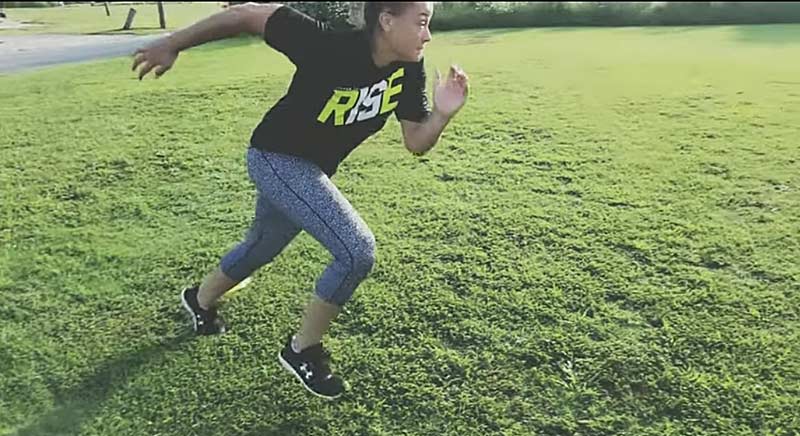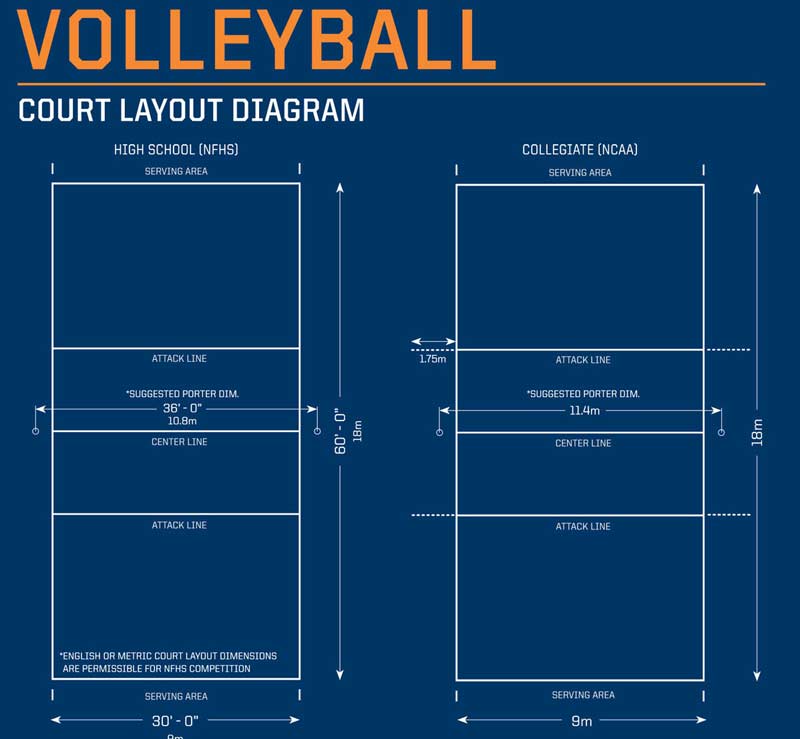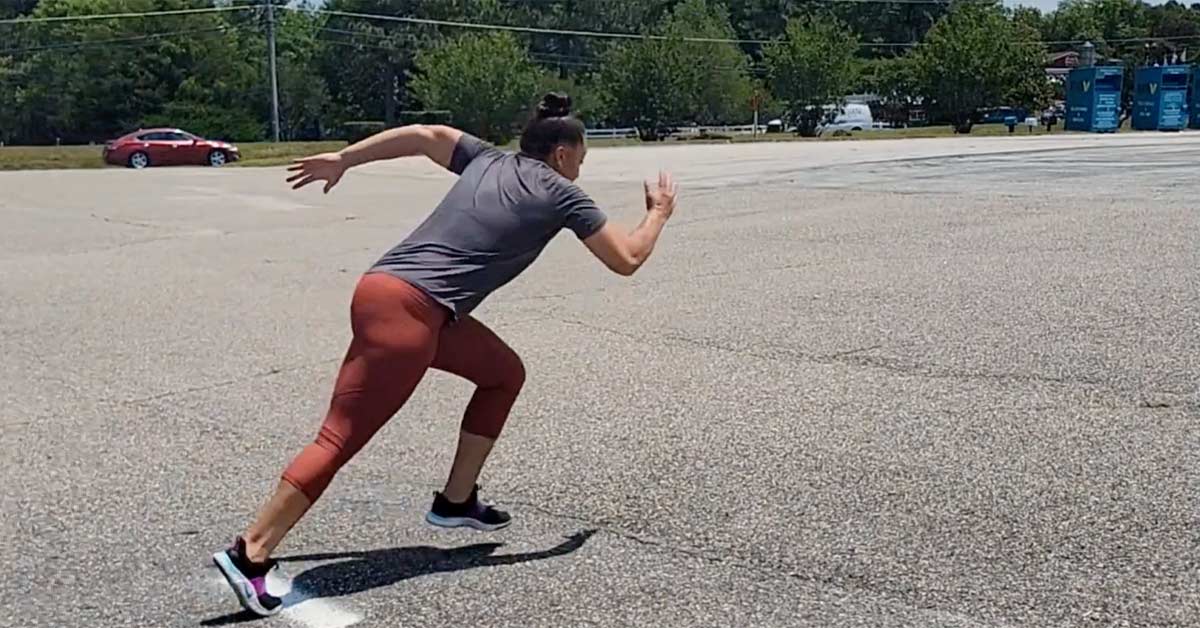As performance training techniques, technologies, and their reliability and availability across all levels of athletics continue to grow and evolve, there is one thing that for the vast majority of athletes is becoming more empirically true: sprinting and speed development are an absolute necessity.
At some point in the training process, during any given sports season, athletes are put through some form of “sprint” training sessions. Unfortunately, unless an athlete is a member of the track and field or football teams, there is a good chance that speed development training methods are not being utilized—or, at best, not being utilized optimally. Moderate-intensity running is used as a means to “condition.” While one could find logical reasoning in sports that do not necessarily require high frequency or high volumes of running and sprinting, if we look at the physiological and neurological adaptations that occur in response to speed development—and how those adaptations also enhance other abilities—we can find great value in adding speed into a training regimen.
If we look at the physiological and neurological adaptations that occur in response to speed development…we can find great value in adding speed into a training regimen, says @KoachGreen_. Share on XFor the athletes of various sports with whom I’m privileged to work, several female volleyball players were among those who made the most astounding improvements in physical ability following the introduction of speed development training.
In this article, I will present and express the following:
- The general adaptations and improvements manifested in athletes by speed development.
- How those relate to and improve the abilities of volleyball players.
- The methods I’ve used firsthand.

What Is “Speed”?
As always, to set our foundation and for continuity purposes, let’s start with some definitions. From my perspective, there are two forms of speed when it comes to athletics.
For starters, Merriam-Webster defines speed as:
-
“(2) the magnitude of a velocity irrespective of direction.”
In physics, speed is expressed and represented as velocity. Luckily for us, Merriam-Webster also defines velocity as “the rate of change of position along a straight line with respect to time,” or simply, the time it takes to get from point A to B (or any other point that is not A). While direction does not necessarily matter to measure velocity exclusively, the change of position does.
Velocity equals the change in distance over the change in time.
-
V = ∆D ÷ ∆T
This equation is how we get measurements such as meters per second (m/s), miles per hour (mph), and so on.
The second delineation of speed I see as a necessary gauge in athletic development is the rate of muscle contraction. Vague, yes, but in terms of power (force × velocity—often characterized as “explosiveness”) and acceleration (a vital component of sprint velocity), muscle contractions signaled by motor neurons are ideal and imperative physiological components to improve upon.
With that, in the sports performance world, coaches often claim, “You can’t train speed in the weight room.”
I vehemently disagree.
While I would agree that you cannot (optimally) train sprint speed in the weight room—due, usually, to a lack of acceleration and deceleration space to tap into the highest intensities of running (i.e., sprinting)—you most certainly can train the neuromuscular system to fire faster and at greater magnitudes in the weight room.
But that’s another conversation for another day.
Casually or mindfully watching a game of volleyball, one may not immediately see the need to train speed and sprint ability. However, if we dissect the enhancements that speed development offers, we find ourselves looking through a different lens.
Watching volleyball, you may not immediately see the need to train speed & sprint ability. Dissect the enhancements that speed development offers & you find yourself looking through a different lens. Share on XNow, having base descriptions to derive our methods, let’s dive into how and why speed development training works and how that can and should be applied to a volleyball performance training program.
There are a few popular understandings of how speed is expressed, gauged, and trained in relation to athletics—sprinting, to be more precise—but I will focus on one in particular.
The late Charlie Francis presented the “95% threshold,” which signifies the intensity required by a “good” speed development session. While this may seem high from the perspective of a strength and conditioning, or weight room, purist (aiming for and maintaining 95% or greater outputs in the weight room is not recommended), athletes and coaches alike can be surprised at the intensity percentages that are possible with a well-thought-out plan, rest, and a quality timing system for gauging training performance.
Working with 9- to 23-year-olds, I prefer a 90% threshold to designate “sprinting” and/or “speed training.” On the lower end of the age spectrum, most young athletes haven’t reached—or are not even yet capable of tapping into—the higher thresholds due to a lack of force production, coordination, and experience, so 90% works great for these populations.
The primary adaptations we should seek from speed development training are:
- Rate of force development.
- Improved muscular impulse.
- Improved joint range of motion.
- Lower limb reactivity and stiffness.
- Coordination and rhythm.
- Improved body composition.
Speed Training and Development Adaptations
Volleyball, from an energy system standpoint, is an interesting sport. In essence, it is an anaerobic (without oxygen) power sport that requires a dense aerobic (with oxygen) base. These guidelines sound similar to many other sports (football and basketball primarily), but they surely are not. The game requires athletes to be able to move around at moderate intensities for upward of 20–30 seconds (sometimes longer, depending on the level of play) while simultaneously needing the ability to tap into the highest intensities of motor unit function in a relatively small space.

Understanding how the game is played (observing firsthand and questioning athletes about their play needs helps immensely for all sports performance training) builds a better framework from which to design a program. That being said, if we stop at the surface of play and see that athletes are moving continuously for 15+ seconds per play, we can clearly see why many volleyball athletes are put through extensive running and “conditioning” modalities to increase their aerobic base. This approach is noble, but it will leave athletes desiring more.
Volleyball athletes need the ability to move around for up to half a minute or more but also the ability to react and sprint after balls and produce massive amounts of instant jump force vertically (and sometimes horizontally) to have an advantage over their opponent.
Enter speed training.
Volleyball athletes need to be able to move around for 30 seconds or more but also to react and sprint after balls and produce massive amounts of instance jump force vertically—enter speed training. Share on XRate of force development (RFD)—the measure of how fast force emerges—for power sports is possibly one of the greatest indicators of athletic ability. In girls’ (< 18 years old) and women’s (collegiate to elite level) volleyball, ball velocities can reach upward of 55 mph (24 m/s).1 The ability to react and make a play on that type of ball speed takes a great deal of RFD, as well as muscular impulse—the proportionality of the change in total force and the change in velocity. For more on this, I recommend taking some time and reading Force by Dan Cleather.
Physiologically, research shows that the improvements in physical ability from sprint and speed training are likely due to changes in (trained) muscle fiber type and other musculotendinous adaptations of the lower and upper leg, torso, and arms. These muscular adaptations (training type II fast twitch fibers, increasing lean muscle mass and tendon plasticity and durability) work in tandem with changes to the metabolism.2
In the traditional weight room setting, when muscle mass is increased, there is a reduction in joint ranges of motion—particularly the primary joints of the shoulder, hip, knee, and ankle. Due to the rapid and fluid requirements of sprinting, joints, tendons, and musculature are, over time, pushed beyond previous ranges via the high threshold outputs of the stretch-shortening cycle. This newfound ROM enables volleyball players to get into positions more efficiently and safely in, say, “digs” that may have taken more effort previously.
“If you aren’t being timed, you aren’t sprinting.” – Tony Holler
In the summer of 2021, scheduling—inadvertently but conveniently—allowed for two of the “college prep” and high school groups I train at my facility to be composed exclusively of female volleyball players. I’m of the school of thought that “athletes are athletes” regardless of sport, gender, and level of play (until elite/pro levels are attained). The differentiating variable(s) in training that I see are training age and injury history/return-to-play needs.
To that end, these young ladies would participate in the “SPS System” I’ve been implementing for the last several years, predominantly with football, basketball, golf, and general athletic development (for myself).
We began with simple sprint mechanic drills:
- A-marches/runs/skips/switches
- Movement + CNS primer
- Wall switches
- CNS primer + posture, position, patterning, and power (4 Ps of Speed)
Then moved to acceleration-specific drills:
- Medicine ball push starts
- Accentuates two-foot push for first “step”
- Encourages hip projection
- Half-kneeling starts
- Accentuates two-foot push for first “step”
- Artificial loading
- (Two-point) stagger broad jump
- Accentuates two-foot push for first “step”
- Encourages hip projection
- Encourages and accentuates horizontal displacement
And to accentuate and load:
- Hill sprints
- Artificial loading
- Encourages hip projection
- Reinforces posture and positioning
- Prowler sprints
- Load increases natural output
- Encourages and accentuates horizontal displacement
- Reinforces posture and positioning
And, finally, timed sprints.
To ensure the highest (or near-highest) efforts and intensities were performed, we utilized the Dashr Timing System. We spent the vast majority of time focusing exclusively on two-point accelerations of 5, 10, and 15 yards. Within these distances, we changed start positions: lateral facing, reverse facing, jump/hop into, etc.
Again, volleyball is played in scarce space compared to other playing fields. While developing max velocity capabilities is theoretically ideal for speed development, getting exposure from the substantial efforts of sprint acceleration was more than sufficient. At 15 yards and less, we can home in on the abilities and physical transformations described above and incorporate other sport-specific movements for transferability purposes.
Video 1. Wall switches + prowler sprints
Video 2. Medicine ball push starts + hill sprints
After a four-to-six-week block of speed training progress, we were able to incorporate more familiar methods into their training while still focusing on the speed and efficiency of movement. Those things primarily included shuttles of sorts. From the traditional 5-10-5 pro agility to more elaborate and complex multidirectional reactive shuttles that we used for both speed and low-intensity conditioning work, these young ladies improved all other areas of their training and, inevitably, their overall athleticism.
Video 3. 5-10-5 pro agility
On top of the confidence, sprinting is a great return-to-play tool. Research shows that most severe chronic and acute injuries in volleyball are related to the lower limb, and more specifically, the tendons and ligaments of the lower limb: patellar and Achilles tendinopathy and ankle sprains lead the way at approximately 40%.3 While a percentage of these injuries are related to contact with other players (i.e., stepping on feet when landing from a jump), the ability to react quickly and the robustness and resilience of the tendons to absorb—for the lack of a better term—those “reshaping impacts” can surely diminish the frequency and severity of injuries.
Similarly, the intensity of arm swing required in sprinting(≥ 90%) can also encourage a better—faster—mechanism for striking the ball, as well as glenohumeral strength, stability, and resilience. Yes, the mechanics are (obviously) different, but from a neuromuscular standpoint, the rate of force is analogous.
The ability to sprint efficiently not only creates these enhancements but also a different level of self-confidence that every athlete could benefit from, says @KoachGreen_. Share on XUltimately, with a sport like volleyball, athletes tend to play more often than just with their “main” team (clubs, tournaments, open gym), similar to basketball, soccer, and even field hockey or lacrosse. Having the ability to sprint efficiently not only creates the aforementioned enhancements but also a different level of self-confidence that every athlete could benefit from. Knowing that you’re faster than your competition, if not physically comparable, allows for much more diversity in game play.
Since you’re here…
…we have a small favor to ask. More people are reading SimpliFaster than ever, and each week we bring you compelling content from coaches, sport scientists, and physiotherapists who are devoted to building better athletes. Please take a moment to share the articles on social media, engage the authors with questions and comments below, and link to articles when appropriate if you have a blog or participate on forums of related topics. — SF
References
1. Valades D and Palao J. “Monitoring ball speed of the volleyball spike throughout the season for elite women´s volleyball players.” Journal of Sport and Human Performance. 2015;3:1–11. 10.12922/jshp.0053.2015.
2. Ross A and Leveritt M. “Long-Term Metabolic and Skeletal Muscle Adaptations to Short-Sprint Training.” Sports Medicine (Auckland, N.Z.). 2001;31:1063–1082. 10.2165/00007256-200131150-00003.
3. Eerkes K. “Volleyball Injuries.” Current Sports Medicine Reports. September/October 2012;11(5):251–256. doi: 10.1249/JSR.0b013e3182699037





